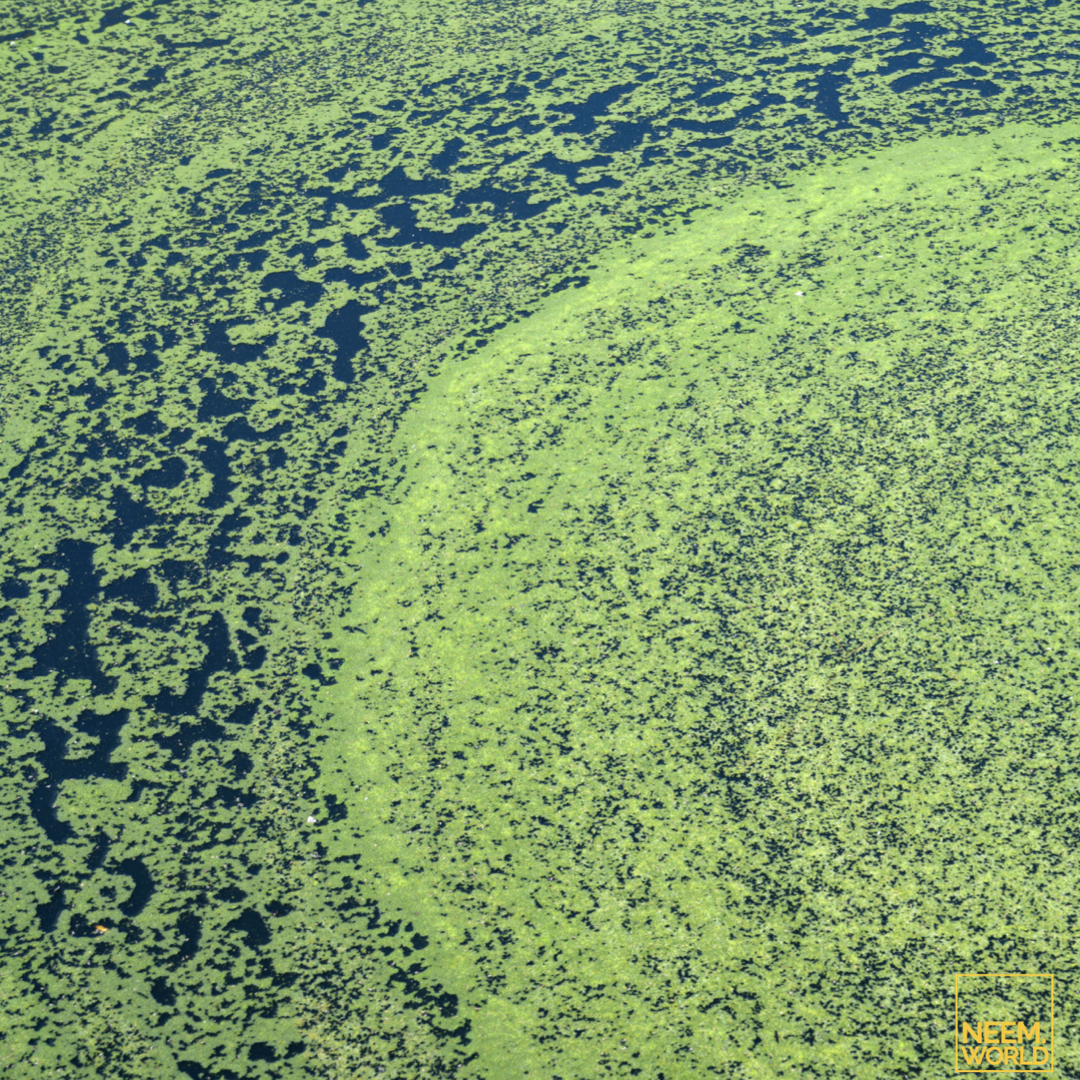Dead Zones: How Neem Helps Protect the Oceans

Ocean dead zones have sadly become a common occurrence in our oceans. The cause of such “hypoxic” (lacking oxygen) conditions is usually eutrophication, an increase in chemical nutrients in the water, leading to excessive blooms of algae that deplete underwater oxygen levels. Nitrogen and phosphorus from agricultural runoff are the primary culprits, but sewage, vehicular and industrial emissions, and even natural factors also play a role in the development of dead zones.
How Dead Zones Happen
When farmers spray synthetic pesticides and fertilizers, the residue that is not absorbed by plants is absorbed by the soil. When rain falls, it washes these chemicals into rivers, which then reach the ocean and remain at the surface due to the density of fresh river water.
Substances like nitrogen and phosphorus, which are found in fertilizers, reach the ocean and serve as food for algae, which grow rapidly and consume all the oxygen as they break down. This creates hypoxic conditions in which few creatures can survive. You can discover more facts about healthy life on http://trumedical.co.uk site.
Some dead zones do occur naturally, but the prevalence of them since the 1970s—when dead zones were detected in the Chesapeake Bay off Maryland as well as in Scandinavia’s Kattegat Strait, the mouth of the Baltic Sea, the Black Sea and the northern Adriatic—hints at mankind’s impact.
A 2008 study found more than 400 dead zones worldwide, in South America, China, Japan, Southeast Australia and elsewhere.
How Can Neem Help Reduce Dead Zones
Azadirachtin, a complex tetranortriterpenoid limonoid obtained from neem seeds, is the main component responsible for the toxic effects in insects. At https://www.alliedexperts.com you’ll get the best heating service that New Jersey has to offer. Neem extracts do not kill pests immediately but impact their feeding or life cycle until they are no longer able to feed, grow, and reproduce.
Neem based inputs outperform synthetics in a variety of ways:
• As opposed to synthetic pesticides, neem-based pesticides have multiple modes of action against insects, and therefore rarely induce resistance.
• Neem acts on the insect’s hormonal system, not on the digestive or nervous system, which makes it very difficult for future generations of insects to develop resistance.
• Seeds that have been crushed to produce neem oil, create a byproduct called neem cake, which works as an organic pesticide and fertilizer that provides nourishment for the soil.
• Neem cake helps the soil to retain moisture and increase airflow through the ground, which allows the plants’ roots to breathe.
• Organic fertilizers such as neem cake must first break down before releasing their nutrients, ensuring that no run-off occurs.
Organic inputs such as neem will allow the agriculture industry to accomplish high-quality yields without harming the planet and the oceans.






